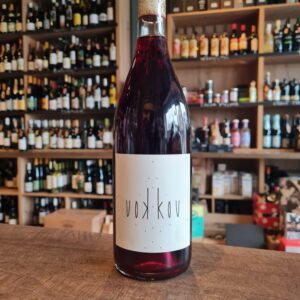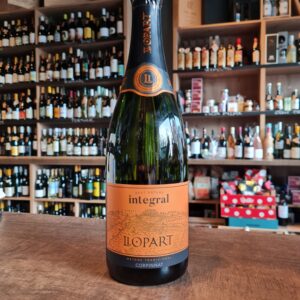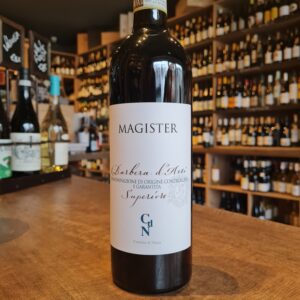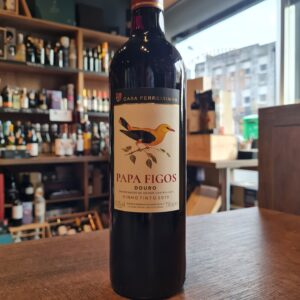-
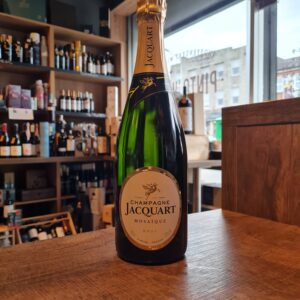 The vineyards cultivated by Jacquart winemakers cover 2,400 ha spread over sixty crus, that is to say, sixty villages throughout the Champagne area – what a mosaic! It’s within this large range of sites in Champagne that their winemaker draws together the different shades through careful assemblage, creating a cuvée that is ethereal and which seduces lovers of JACQUART. Brut Mosaïque is a wine for all times, sharing the pleasures of daily life, celebrating good news, and friends that pop round unexpectedly – this is the champagne you always have in the fridge. «Our Brut Mosaïque elegantly shows the uniqueness of our style, expressing the result of selection and choices without compromise.» Floriane Eznack THE FACTS A blend where Chardonnay is the dominant grape variety (35%-40%), giving Brut Mosaïque its freshness and delicate aromas. Pinot Noir (30%-35%) adds structure and Pinot Meunier (25% -30%) brings fruit.The grapes are sourced from exceptional terroirs, including the Grands Crus of the Côte des Blancs and the Montagne de Reims. The presence of 25% reserve wine ensures regularity of style, while more than three years ageing and a light dosage of 10 g/l result in a balanced and complex champagne. There is a time and place for this bubbly and that is anytime and everywhere! Day or night, as an aperitif or with fish or cheese. For a special occasion or for sharing with friends, Brut Mosaïque makes the moment.
The vineyards cultivated by Jacquart winemakers cover 2,400 ha spread over sixty crus, that is to say, sixty villages throughout the Champagne area – what a mosaic! It’s within this large range of sites in Champagne that their winemaker draws together the different shades through careful assemblage, creating a cuvée that is ethereal and which seduces lovers of JACQUART. Brut Mosaïque is a wine for all times, sharing the pleasures of daily life, celebrating good news, and friends that pop round unexpectedly – this is the champagne you always have in the fridge. «Our Brut Mosaïque elegantly shows the uniqueness of our style, expressing the result of selection and choices without compromise.» Floriane Eznack THE FACTS A blend where Chardonnay is the dominant grape variety (35%-40%), giving Brut Mosaïque its freshness and delicate aromas. Pinot Noir (30%-35%) adds structure and Pinot Meunier (25% -30%) brings fruit.The grapes are sourced from exceptional terroirs, including the Grands Crus of the Côte des Blancs and the Montagne de Reims. The presence of 25% reserve wine ensures regularity of style, while more than three years ageing and a light dosage of 10 g/l result in a balanced and complex champagne. There is a time and place for this bubbly and that is anytime and everywhere! Day or night, as an aperitif or with fish or cheese. For a special occasion or for sharing with friends, Brut Mosaïque makes the moment. -
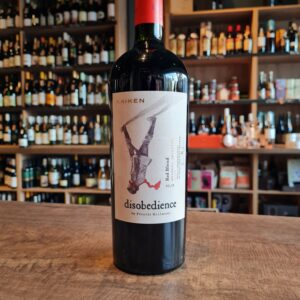 This wine celebrates a collaboration of many years between well-known Argentinian chef Francis Mallmann and Kaiken estate. Known for his distinct style of open fire cooking, ably captured in the first season of Netflix’s Chef’s Table, Mallman's unstoppable and unique nature is captured by the name 'Disobedience'. Kaikenes are wild geese, native to Patagonia, that fly across the Andes between Chile and Argentina. Montes, the Chilean winery, crossed the Andes in the same way to set up in Mendoza. Their vineyards are situated in the heart of Mendoza and further to the south in Valle de Uco, where many of the premium producers are now sourcing their fruit. The focus is primarily on Malbec and Cabernet Sauvignon, a variety that has been somewhat forgotten as Malbec has surfed one wave of success after another in the past decade. Kaiken's own vineyards supply 70% of their production requirements and 30% is from vineyards that they control. The grapes are sourced from Kaiken's vineyards in Altamira in the Uco Valley and Vistalba in the Luján de Cuyo region. Vistalba's chalk and sandy soil, at 1,200m altitude, imparts an elegant and fruit-driven character to the wine.The alluvial and loam soil of the Luján de Cuyo forces vines to penetrate deep into the soil, contributing deep fruit concentration and tannin. As Francis Mallmann says, wine is a celebration. And this is a wine created to celebrate friendship, love, reunion... And celebrate an act of freedom, no one can decide how to do it.
This wine celebrates a collaboration of many years between well-known Argentinian chef Francis Mallmann and Kaiken estate. Known for his distinct style of open fire cooking, ably captured in the first season of Netflix’s Chef’s Table, Mallman's unstoppable and unique nature is captured by the name 'Disobedience'. Kaikenes are wild geese, native to Patagonia, that fly across the Andes between Chile and Argentina. Montes, the Chilean winery, crossed the Andes in the same way to set up in Mendoza. Their vineyards are situated in the heart of Mendoza and further to the south in Valle de Uco, where many of the premium producers are now sourcing their fruit. The focus is primarily on Malbec and Cabernet Sauvignon, a variety that has been somewhat forgotten as Malbec has surfed one wave of success after another in the past decade. Kaiken's own vineyards supply 70% of their production requirements and 30% is from vineyards that they control. The grapes are sourced from Kaiken's vineyards in Altamira in the Uco Valley and Vistalba in the Luján de Cuyo region. Vistalba's chalk and sandy soil, at 1,200m altitude, imparts an elegant and fruit-driven character to the wine.The alluvial and loam soil of the Luján de Cuyo forces vines to penetrate deep into the soil, contributing deep fruit concentration and tannin. As Francis Mallmann says, wine is a celebration. And this is a wine created to celebrate friendship, love, reunion... And celebrate an act of freedom, no one can decide how to do it. -
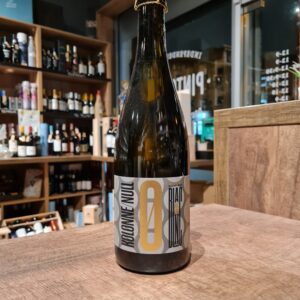 Delicious alcohol-free sparkling wine from Kolonne Null, made in Germany. The Freiherr von Gleichenstein winery has been synonymous with quality, professionalism and passion for almost 400 years. The wines remain recognizable by the distinctive flint minerality of the Kaiserstuhl. Well-coordinated team, complex high-end wines and long-lasting relationships are hallmarks of the South Baden winery culture. Excellent as an aperitif or as an accompaniment to fine canapes, seafood, fresh desserts such as zabaglione and panna cotta with fruits.
Delicious alcohol-free sparkling wine from Kolonne Null, made in Germany. The Freiherr von Gleichenstein winery has been synonymous with quality, professionalism and passion for almost 400 years. The wines remain recognizable by the distinctive flint minerality of the Kaiserstuhl. Well-coordinated team, complex high-end wines and long-lasting relationships are hallmarks of the South Baden winery culture. Excellent as an aperitif or as an accompaniment to fine canapes, seafood, fresh desserts such as zabaglione and panna cotta with fruits. -
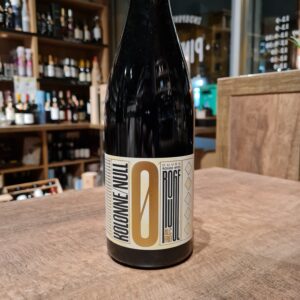 In the middle of the Spanish plateau "Meseta de Ocana" not far from Toledo, three friends founded their own winery in 1999: Margarita Madrigal, Alexandra Schmedes and Gonzalo Rodriguez. The revival of regional traditions became the basis of their way of working, which is characterized by the ecological cultivation of 35 hectares of native grape varieties and the extremely continental climate. Together with Alexandra, the first Spanish red wine, Cuvée Rouge No.2, was developed. This velvety, grippy taste makes it a must-drink on a barbecue evening, with risotto and pasta. The perfect non-alcoholic red wine for all those who love it wild and unbridled. Bring your Spain vacation home!
In the middle of the Spanish plateau "Meseta de Ocana" not far from Toledo, three friends founded their own winery in 1999: Margarita Madrigal, Alexandra Schmedes and Gonzalo Rodriguez. The revival of regional traditions became the basis of their way of working, which is characterized by the ecological cultivation of 35 hectares of native grape varieties and the extremely continental climate. Together with Alexandra, the first Spanish red wine, Cuvée Rouge No.2, was developed. This velvety, grippy taste makes it a must-drink on a barbecue evening, with risotto and pasta. The perfect non-alcoholic red wine for all those who love it wild and unbridled. Bring your Spain vacation home! -
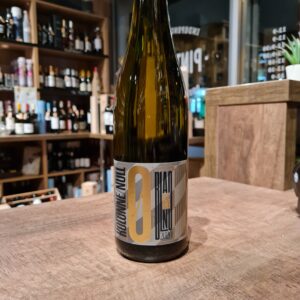 With admirable precision and innovative ideas, the family-run winery Pauly, now in its 3rd generation, succeeds in producing stylish wines with an outstanding character of their own. The winery is not only known for its famous steep slope on the Niederberg-Helden on the Mosel River, but also for the unique slate minerality that gives the wines an elegant, fresh style. The alcohol-free Riesling from Kolonne Null is perfect for all wine enthusiasts who like as little residual sweetness in their wine as possible. Best enjoyed very well chilled at 5 - 7°C. It is perfect as an accompaniment to stir-fried vegetables with fish, omelette with salmon and fennel or vegetable salad with beetroot.
With admirable precision and innovative ideas, the family-run winery Pauly, now in its 3rd generation, succeeds in producing stylish wines with an outstanding character of their own. The winery is not only known for its famous steep slope on the Niederberg-Helden on the Mosel River, but also for the unique slate minerality that gives the wines an elegant, fresh style. The alcohol-free Riesling from Kolonne Null is perfect for all wine enthusiasts who like as little residual sweetness in their wine as possible. Best enjoyed very well chilled at 5 - 7°C. It is perfect as an accompaniment to stir-fried vegetables with fish, omelette with salmon and fennel or vegetable salad with beetroot. -
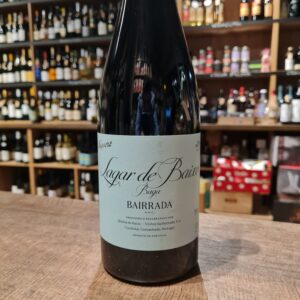 The huge passion of Dirk Niepoort for Baga variety and the fantastic terroir of the Bairrada region led him to look for small parcels of Baga in very old vines, scattered throughout the Cantanhede region, over the past three years. These wines were light in color and alcoholic content, elegant and fine, soon after bottling, but with a huge ageing potential. With the acquisition of the Quinta de Baixo in 2012, it became possible to recreate the Lagar de Baixo brand, moving towards a classically-styled wine which highlights the nobility of Baga grown in Bairrada. The red Lagar de Baixo is the result of a combination of very old vines and younger vines: complex, serious, but with some youth and grip. The 2020 Lagar de Baixo is our most classic wine from Quinta de Baixo and the wine that best reflects the Bairrada terroir. It is fermented in lagares and aged in used barrels. Food Suggestion: Venison dishes (partridge, wild boar), pork and bean stew, baked cod. Vegetarian suggestions: dishes with legumes (red kidney beans, lentils).
The huge passion of Dirk Niepoort for Baga variety and the fantastic terroir of the Bairrada region led him to look for small parcels of Baga in very old vines, scattered throughout the Cantanhede region, over the past three years. These wines were light in color and alcoholic content, elegant and fine, soon after bottling, but with a huge ageing potential. With the acquisition of the Quinta de Baixo in 2012, it became possible to recreate the Lagar de Baixo brand, moving towards a classically-styled wine which highlights the nobility of Baga grown in Bairrada. The red Lagar de Baixo is the result of a combination of very old vines and younger vines: complex, serious, but with some youth and grip. The 2020 Lagar de Baixo is our most classic wine from Quinta de Baixo and the wine that best reflects the Bairrada terroir. It is fermented in lagares and aged in used barrels. Food Suggestion: Venison dishes (partridge, wild boar), pork and bean stew, baked cod. Vegetarian suggestions: dishes with legumes (red kidney beans, lentils). -
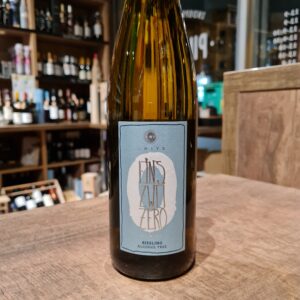 Johannes Leitz continues to innovate! In doing so, he recently partnered with a company to produce two alcohol-free rieslings. Germans have been producing non-alcoholic wines for over 70 years and that history has led to inventions to improve quality. Leitz’s hometown of Rüdesheim is the historic birthplace of the famous distillery Asbach Uralt. After the war, a fellow vigneron named Carl Jung began a distillery. Ultimately, Jung could not compete with the local brandy, but he developed a vacuum distillation system which enabled him to lower the temperature at which alcohol could boil off (because the boiling point decreases as atmospheric pressure decreases). Innovations in vacuum distillation have improved in recent years, and Leitz found a producer in Rheinhessen who recently patented a new, completely closed system that allows wine alcohol to boil at 28°C, preserving “wine-like” aromas and characteristics. As we all know, like fat, alcohol is a transporter of flavor, and without it, there needs to be something else to carry those flavors. 35 grams/L does the work for this riesling, though the sugar is nearly eaten up. Pairs well with gratinated crostini, cauliflower and goat’s cheese & butter, as well as with an Asian chicken casserole.
Johannes Leitz continues to innovate! In doing so, he recently partnered with a company to produce two alcohol-free rieslings. Germans have been producing non-alcoholic wines for over 70 years and that history has led to inventions to improve quality. Leitz’s hometown of Rüdesheim is the historic birthplace of the famous distillery Asbach Uralt. After the war, a fellow vigneron named Carl Jung began a distillery. Ultimately, Jung could not compete with the local brandy, but he developed a vacuum distillation system which enabled him to lower the temperature at which alcohol could boil off (because the boiling point decreases as atmospheric pressure decreases). Innovations in vacuum distillation have improved in recent years, and Leitz found a producer in Rheinhessen who recently patented a new, completely closed system that allows wine alcohol to boil at 28°C, preserving “wine-like” aromas and characteristics. As we all know, like fat, alcohol is a transporter of flavor, and without it, there needs to be something else to carry those flavors. 35 grams/L does the work for this riesling, though the sugar is nearly eaten up. Pairs well with gratinated crostini, cauliflower and goat’s cheese & butter, as well as with an Asian chicken casserole. -
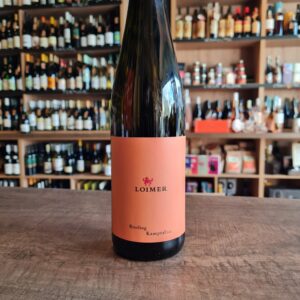 The Loimer estate is located around Langenlois in the sunny Kamptal region of Lower Austria, to the northwest of Vienna. Unlike many Austrian producers who go for a rich, sweet Alsace style, Fred Loimer obtains full ripeness in the vineyard yet ferments to dryness. The resulting wines (like the Loimer Riesling) display his trademark definition, zest and balance on the palate. Fred Loimer realised very early on that his future lay in wine, after his father converted the family farm into a winery. He attended Austria’s renowned Klosterneuburg University and later gained important experience at wineries in Nahe, Germany and in Napa Valley, California. On his return to Langenlois, Fred introduced new methods in the vineyards and winery, with the aim of continually improving the quality of the wine. In 1997, Fred took over the winery from his father and, in 1998, purchased and renovated a historical vaulted brick cellar (a former cellar of the Haindorf Castle) amidst the vines between Langenlois and Zöbing. The wines have been vinified and stored here since 1999. The 60 hectares of vineyards are divided into 100 parcels, planted on seven different soil types (ranging from loess, gravel, clay, sand and slate to Gföhler gneiss, a coarse-grained, metamorphic rock containing quartz, felspar and mica), which bring great complexity to the wines. There is no need to say that the high quality of their soils is crucial for the Loimer Riesling and its minerality. Situated at an altitude of 200-420m above sea level, the south facing vineyards benefit from warm days and cool nights, which encourage the development of the aromatic components in the grapes. The high summer temperatures are mitigated by the River Danube and the Waldviertel (forested area), while the well drained soils mean the vines can form deeply penetrating root systems, thus overcoming even long periods of drought without damage. Since 2006, the vineyard and cellar work has been conducted according to biodynamic principles.
The Loimer estate is located around Langenlois in the sunny Kamptal region of Lower Austria, to the northwest of Vienna. Unlike many Austrian producers who go for a rich, sweet Alsace style, Fred Loimer obtains full ripeness in the vineyard yet ferments to dryness. The resulting wines (like the Loimer Riesling) display his trademark definition, zest and balance on the palate. Fred Loimer realised very early on that his future lay in wine, after his father converted the family farm into a winery. He attended Austria’s renowned Klosterneuburg University and later gained important experience at wineries in Nahe, Germany and in Napa Valley, California. On his return to Langenlois, Fred introduced new methods in the vineyards and winery, with the aim of continually improving the quality of the wine. In 1997, Fred took over the winery from his father and, in 1998, purchased and renovated a historical vaulted brick cellar (a former cellar of the Haindorf Castle) amidst the vines between Langenlois and Zöbing. The wines have been vinified and stored here since 1999. The 60 hectares of vineyards are divided into 100 parcels, planted on seven different soil types (ranging from loess, gravel, clay, sand and slate to Gföhler gneiss, a coarse-grained, metamorphic rock containing quartz, felspar and mica), which bring great complexity to the wines. There is no need to say that the high quality of their soils is crucial for the Loimer Riesling and its minerality. Situated at an altitude of 200-420m above sea level, the south facing vineyards benefit from warm days and cool nights, which encourage the development of the aromatic components in the grapes. The high summer temperatures are mitigated by the River Danube and the Waldviertel (forested area), while the well drained soils mean the vines can form deeply penetrating root systems, thus overcoming even long periods of drought without damage. Since 2006, the vineyard and cellar work has been conducted according to biodynamic principles. -
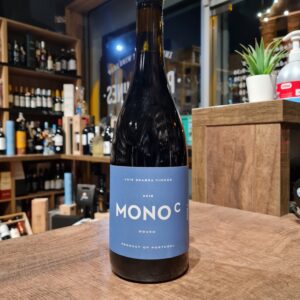 Luis Seabra is a producer that is at the forefront of the “new Douro” movement. Rather than making table wines that are, for all intents and purposes, “Little Ports,” Luis has taken a more balanced, restrained approach to winemaking in the oldest demarcated wine region in the world. His guiding principles are showcasing terroir and nuance above power and extraction. Bright, mineral driven and elegant, Luis’ wines are typically exposés of soil type. With the Mono C, he is taking a look at a particular variety – in this case, Castelão. While Castelão is a grape that is typically found further south in Portugal, Luis has found a mono-planted plot of the light-skinned grape in the Douro and is working his magic to craft a wine of unparalleled delicacy and elegance. Would pair it with charcuterie, grilled pork dishes, roasted poultry
Luis Seabra is a producer that is at the forefront of the “new Douro” movement. Rather than making table wines that are, for all intents and purposes, “Little Ports,” Luis has taken a more balanced, restrained approach to winemaking in the oldest demarcated wine region in the world. His guiding principles are showcasing terroir and nuance above power and extraction. Bright, mineral driven and elegant, Luis’ wines are typically exposés of soil type. With the Mono C, he is taking a look at a particular variety – in this case, Castelão. While Castelão is a grape that is typically found further south in Portugal, Luis has found a mono-planted plot of the light-skinned grape in the Douro and is working his magic to craft a wine of unparalleled delicacy and elegance. Would pair it with charcuterie, grilled pork dishes, roasted poultry -
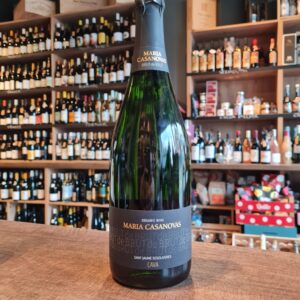 The Bodega or Cava Maria Casanovas is located in the heart of the Penedès, in Sant Sadurní d'Anoia, the centre of Cava production. It is owned by the Casanovas family and managed by three children of Maria Casanovas. Jordi and Jacint are responsible for the vineyards and the cellar, Rosa for administration and marketing. Maria Casanovas' parents were already grape growers and sold their produce to the large cava wineries. Cava has been produced under their own name since 1984. 13 hectares are owned and planted with the local grape varieties Xarel-lo, Parellada and Macabeo (Viura) as well as the international varieties Pinot Noir and Chardonnay. Maria Casanovas was one of the pioneers who introduced Pinot Noir to Penedès. Fossils can be found occasionally in the calcareous, gravelly clay soils. Food pairing suggestion: Apéro pastries, Tagliatelle al tartufo, Vegetable pie, Salad with vegetables, pulses, pasta
The Bodega or Cava Maria Casanovas is located in the heart of the Penedès, in Sant Sadurní d'Anoia, the centre of Cava production. It is owned by the Casanovas family and managed by three children of Maria Casanovas. Jordi and Jacint are responsible for the vineyards and the cellar, Rosa for administration and marketing. Maria Casanovas' parents were already grape growers and sold their produce to the large cava wineries. Cava has been produced under their own name since 1984. 13 hectares are owned and planted with the local grape varieties Xarel-lo, Parellada and Macabeo (Viura) as well as the international varieties Pinot Noir and Chardonnay. Maria Casanovas was one of the pioneers who introduced Pinot Noir to Penedès. Fossils can be found occasionally in the calcareous, gravelly clay soils. Food pairing suggestion: Apéro pastries, Tagliatelle al tartufo, Vegetable pie, Salad with vegetables, pulses, pasta -
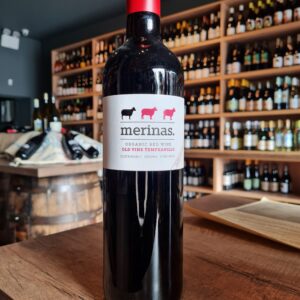 The Mesta was a powerful alliance of shepherds in medieval Castile, who controlled the “cañadas”: traditional rights-of-way for migrating sheep. to this day, the “cañadas” are protected from being blocked or built upon. Our vineyards are nestled deep in the land of The Mesta, and are still passed over by flocks on their annual migration – a reminder of ancient rights, and a cultural cue for continued co-existence with nature. Produced from organically farmed vineyards in Uclés (Castile, Spain). Managed as an integrated ecosystem and studded with centenary oak trees. The continental climate with sunny days and cool nights allow us to achieve intense fruit and excellent varietal definition, while retaining remarkable freshness Mesta Tempranillo is a vibrant and juicy, unoaked red wine, showing great purity and the typicity of high-altitude Tempranillo, with expressive and well-defined aromas of red berries, rosemary and a touch of liquorice. Bright ruby red colour. Fresh and with an excellent persistence on the palate, with round texture and a satisfyingly dry finish. Very versatile, medium-bodied food wine, excellent with tapas, grilled meat and pasta.
The Mesta was a powerful alliance of shepherds in medieval Castile, who controlled the “cañadas”: traditional rights-of-way for migrating sheep. to this day, the “cañadas” are protected from being blocked or built upon. Our vineyards are nestled deep in the land of The Mesta, and are still passed over by flocks on their annual migration – a reminder of ancient rights, and a cultural cue for continued co-existence with nature. Produced from organically farmed vineyards in Uclés (Castile, Spain). Managed as an integrated ecosystem and studded with centenary oak trees. The continental climate with sunny days and cool nights allow us to achieve intense fruit and excellent varietal definition, while retaining remarkable freshness Mesta Tempranillo is a vibrant and juicy, unoaked red wine, showing great purity and the typicity of high-altitude Tempranillo, with expressive and well-defined aromas of red berries, rosemary and a touch of liquorice. Bright ruby red colour. Fresh and with an excellent persistence on the palate, with round texture and a satisfyingly dry finish. Very versatile, medium-bodied food wine, excellent with tapas, grilled meat and pasta. -
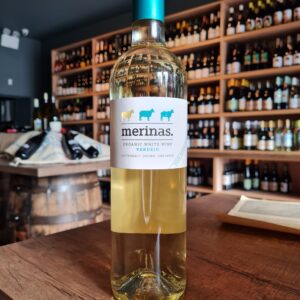 Merinas comes from the Bodegas y Viñedos Fontana, located in the town of Cuenca. The name Merinas is also a reference to the merino sheep, the most famous sheep breed in the world which, incidentally, sometimes seems to scurry around in the vines. A crisp, aromatic white wine, showing great purity of aromas and a precise expression of the Verdejo grape. Bright, pale straw yellow, with intense, fresh notes of grass, fennel and white pepper. Dry but juicy on the palate, with excellent balance, a moderate alcohol of only 12,5% with a persistent, slightly mineral finish. Excellent as an aperitif and with pasta, salads, poultry and fish dishes.
Merinas comes from the Bodegas y Viñedos Fontana, located in the town of Cuenca. The name Merinas is also a reference to the merino sheep, the most famous sheep breed in the world which, incidentally, sometimes seems to scurry around in the vines. A crisp, aromatic white wine, showing great purity of aromas and a precise expression of the Verdejo grape. Bright, pale straw yellow, with intense, fresh notes of grass, fennel and white pepper. Dry but juicy on the palate, with excellent balance, a moderate alcohol of only 12,5% with a persistent, slightly mineral finish. Excellent as an aperitif and with pasta, salads, poultry and fish dishes. -
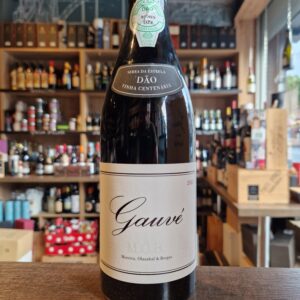 This project was born from the will of three winemakers, Jorge Moreira, Francisco Olazabal and Jorge Serôdio Borges, to make a wine together. The chosen region was the Dão, a region for which there is a common admiration that was born in the tasting of older wines, from the 60s and 70s that surprise for their elegance and freshness. The identity and complexity of these wines is indeed remarkable and serves as an inspiration for MOB wines.
This project was born from the will of three winemakers, Jorge Moreira, Francisco Olazabal and Jorge Serôdio Borges, to make a wine together. The chosen region was the Dão, a region for which there is a common admiration that was born in the tasting of older wines, from the 60s and 70s that surprise for their elegance and freshness. The identity and complexity of these wines is indeed remarkable and serves as an inspiration for MOB wines. -
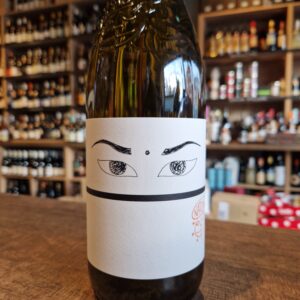 Nat Cool is naturally “cool and funky”. It represents an innovative concept initiated by Niepoort, in which various producers came together to create light, easy-to-drink wines. In the Vinho Verde region, we produced a wine typical of the region – a wine which references the “cloudy” wines of the past which were bottled with some residual sugar and fine lees, and therefore re-fermented in the bottle. Welcome to the Nat Cool world! This white wine was produced using a minimal intervention winemaking approach and is naturally turbid as it fermented in the bottle. It is intentionally not clarified and its aromas are reminiscent of the wines that used to be produced in the Vinho Verde region long ago. This is an intentionally uncomplicated wine: lightly shake the bottle before opening and enjoy with traditional Portuguese snacks!
Nat Cool is naturally “cool and funky”. It represents an innovative concept initiated by Niepoort, in which various producers came together to create light, easy-to-drink wines. In the Vinho Verde region, we produced a wine typical of the region – a wine which references the “cloudy” wines of the past which were bottled with some residual sugar and fine lees, and therefore re-fermented in the bottle. Welcome to the Nat Cool world! This white wine was produced using a minimal intervention winemaking approach and is naturally turbid as it fermented in the bottle. It is intentionally not clarified and its aromas are reminiscent of the wines that used to be produced in the Vinho Verde region long ago. This is an intentionally uncomplicated wine: lightly shake the bottle before opening and enjoy with traditional Portuguese snacks! -
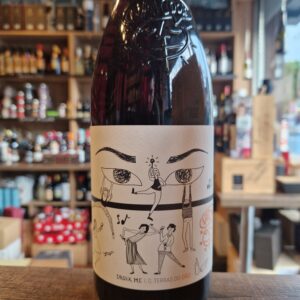 Nat Cool is an innovative, naturally “cool and funky” concept initiated by Niepoort in the Vinho Verde wine region. The movement later expanded into Bairrada and the Douro Valley and is now represented in various Portuguese as well as international wine regions. Nat Cool is not just about producing low-intervention wines – it embodies a movement uniting many different producers striving towards a shared goal of crafting uncomplicated, light and easy-to-drink wines. In 2020, the Nat Cool “family” grew, with its foray into Portugal’s Dão region. It is here, on the slopes of the Serra da Estrela Mountain Range that the DrinkMe Nat Cool is created and where we explore the region’s potential for elegant, fresh and straight-forward wines. Pair it with Light and simple dishes as well as comfort food
Nat Cool is an innovative, naturally “cool and funky” concept initiated by Niepoort in the Vinho Verde wine region. The movement later expanded into Bairrada and the Douro Valley and is now represented in various Portuguese as well as international wine regions. Nat Cool is not just about producing low-intervention wines – it embodies a movement uniting many different producers striving towards a shared goal of crafting uncomplicated, light and easy-to-drink wines. In 2020, the Nat Cool “family” grew, with its foray into Portugal’s Dão region. It is here, on the slopes of the Serra da Estrela Mountain Range that the DrinkMe Nat Cool is created and where we explore the region’s potential for elegant, fresh and straight-forward wines. Pair it with Light and simple dishes as well as comfort food -
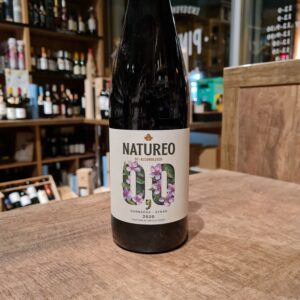 Red wine without alcohol (dealcoholized) made with Grenache and Syrah grapes.5% of the coupage maintains a brief aging in new French oak and subsequently undergoes the dealcoholisation process, maintaining all its aroma and flavour. This non-alcoholic red wine has an intense and delicious flavour. If you are a lover of red wines and want to avoid alcohol, this is a good option. If you do find the fruit coming up too strong, try chilling it to lower that strength. Serve it with pasta, roasts and game dishes
Red wine without alcohol (dealcoholized) made with Grenache and Syrah grapes.5% of the coupage maintains a brief aging in new French oak and subsequently undergoes the dealcoholisation process, maintaining all its aroma and flavour. This non-alcoholic red wine has an intense and delicious flavour. If you are a lover of red wines and want to avoid alcohol, this is a good option. If you do find the fruit coming up too strong, try chilling it to lower that strength. Serve it with pasta, roasts and game dishes -
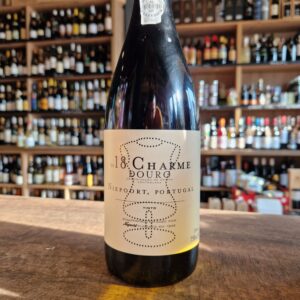 Another excellent wine from Niepoort. Charme is all about elegance and balance, achieved by taking special attention to the smallest details during the entire wine-making process. Made in traditional stone lagares with 100% grape stems, Charme’s elegance is achieved using grapes from very old vineyards in Vale de Mendiz, on the banks of the Pinhão river. Pair it with mushrooms and game dishes, such as partridge or pheasant
Another excellent wine from Niepoort. Charme is all about elegance and balance, achieved by taking special attention to the smallest details during the entire wine-making process. Made in traditional stone lagares with 100% grape stems, Charme’s elegance is achieved using grapes from very old vineyards in Vale de Mendiz, on the banks of the Pinhão river. Pair it with mushrooms and game dishes, such as partridge or pheasant -
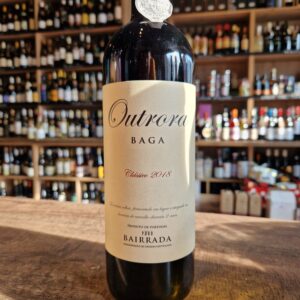 This Bairrada Classic wine is a tribute to the centenary vineyards, matriarchs of the region and witnesses of past times. The grapes are selected from 80 to 120 year old vines from our vineyard in the Cadoiços Valley. Winemaking in “lagar” with foot treading, besides being an old technique, we believe it remains the best way to obtain great wines of this variety. The two-year oak stage and subsequent bottle rest give the elegance and balance needed for a wine to be tasted for many years. An Impressive Bairrada!An Impressive Wine! Goes well with buttered Goat and Sheep Cheeses, traditional sausages (raw, boiled, or roasted), red meats
This Bairrada Classic wine is a tribute to the centenary vineyards, matriarchs of the region and witnesses of past times. The grapes are selected from 80 to 120 year old vines from our vineyard in the Cadoiços Valley. Winemaking in “lagar” with foot treading, besides being an old technique, we believe it remains the best way to obtain great wines of this variety. The two-year oak stage and subsequent bottle rest give the elegance and balance needed for a wine to be tasted for many years. An Impressive Bairrada!An Impressive Wine! Goes well with buttered Goat and Sheep Cheeses, traditional sausages (raw, boiled, or roasted), red meats -
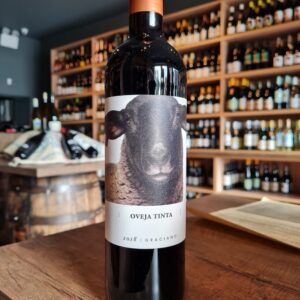 Graciano is one of Spain’s best kept wine secrets - a red grape with thick skins that is a tricky one to grow, which means there’s precious little of it about, even in the vineyards of the Rioja, where it is one of the traditional ingredients in the wine of the same name. This Biio-Organic wine has ruby red color with violet rims. On the nose aromas of wild flowers and ripe fruit, strawberry and blackberries. On the palate it is fresh and fruity, with a good level of acidity and moderate tannins.
Graciano is one of Spain’s best kept wine secrets - a red grape with thick skins that is a tricky one to grow, which means there’s precious little of it about, even in the vineyards of the Rioja, where it is one of the traditional ingredients in the wine of the same name. This Biio-Organic wine has ruby red color with violet rims. On the nose aromas of wild flowers and ripe fruit, strawberry and blackberries. On the palate it is fresh and fruity, with a good level of acidity and moderate tannins. -
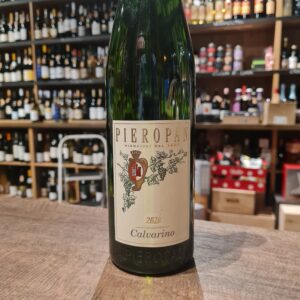 The history of this brand dates back to 1880, when this business was established in the Soave village in the reputed zone of Palazzo Pullici in Italy. Leonildo Pieropan, a physician from Soave, was well-aware of the potential of the soils in this region, because of his previous work experience in the family vineyards. He, along with his sons, Fausto and Gustavo, started working in the cellars in the 1950s and 60s to churn out impeccable quality, Italian wines that spoke a lot about the quality of their terroirs. Today, this business is run by the fifth generation of the Pieropan family, with the same dedication and winemaking philosophy. The Pieropan family believes in traditional winemaking principles. These are reflected in the way they maintain their vineyards. The local territory of these vineyards is given utmost importance and minimalistic intervention technique is followed in addition to organic viticultural practices. The three vineyards from where grapes are sourced for Pieropan wines are Calvarino, La Rocca and Garzon. Calvarino vineyard is the oldest of the three as it has been with the family since 1901. It is located right in the heart of the Soave area and is blessed with amazingly rich and fertile volcanic soils. It makes an excellent aperitif and partners a wide range of dishes, especially vegetable quiches, delicately-flavoured fish, shellfish and cheese soufflés
The history of this brand dates back to 1880, when this business was established in the Soave village in the reputed zone of Palazzo Pullici in Italy. Leonildo Pieropan, a physician from Soave, was well-aware of the potential of the soils in this region, because of his previous work experience in the family vineyards. He, along with his sons, Fausto and Gustavo, started working in the cellars in the 1950s and 60s to churn out impeccable quality, Italian wines that spoke a lot about the quality of their terroirs. Today, this business is run by the fifth generation of the Pieropan family, with the same dedication and winemaking philosophy. The Pieropan family believes in traditional winemaking principles. These are reflected in the way they maintain their vineyards. The local territory of these vineyards is given utmost importance and minimalistic intervention technique is followed in addition to organic viticultural practices. The three vineyards from where grapes are sourced for Pieropan wines are Calvarino, La Rocca and Garzon. Calvarino vineyard is the oldest of the three as it has been with the family since 1901. It is located right in the heart of the Soave area and is blessed with amazingly rich and fertile volcanic soils. It makes an excellent aperitif and partners a wide range of dishes, especially vegetable quiches, delicately-flavoured fish, shellfish and cheese soufflés


